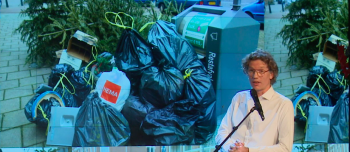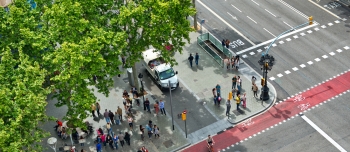CLOSER CITIES aims to create a bridge between urban science and urban practice. By collecting cases on urban practice, analysing them on the shoulders of urban science and sharing research outcomes, urban knowledge becomes shareable. In the ‘5 questions’ series, we ask scientists to briefly reflect on their research and the shareability of their insights and projects.
1. What is the main focus of your research (topic, theme, region)?
The focus of my research is Quality of Life (QoL) and intra-urban inequalities. I have been working in the application of (qualitative) GIS, mixed methods, and urban indicators in the global South and North.
2. Can you give a brief description of your research?
Quality of Life (QoL) is multidimensional. It relates to various domains of life such as housing, income, built and natural environment, health, and the level of satisfaction that individuals have with those domains. I follow a geographic and mixed-methods approach that facilitates the identification of both objective QoL (e.g. measured with urban indicators) and subjective QoL reflecting the views and perceptions of urban residents. I emphasise the importance of empathic forms of QoL mapping; these are forms of QoL analysis that make visible inequalities that negatively affect the ideal of a just and inclusive city. These empathic and sensitive forms of mapping require different forms of knowledge (not only the technical or scientific knowledge produced by experts) and the recognition of convergent and divergent views between diverse groups.
3. How much influence does ‘local context’ have in your field of work? Can results or solutions from your research be shared with other regions easily?
The local context has a strong influence in the field of urban Quality of Life (QoL) since relevant domains of QoL vary between localities. At the same time, the methodological approaches can be applicable and shared with other regions. For example, we published a chapter on Children's perception of their city centre1 accompanied by a website where readers can learn how to perform this type of analysis with open-source software (see: www.itc.nl/urbangis). The way we integrate walking interviews in this geographic and mixed methods approach, and the empathic forms of QoL mapping, can be transferred to other regions. We included walking interviews to analyse walkability and quality of life of women2 in Dhaka and older adults3 in Birmingham. Similarly, in the Erasmus+ capacity development project Binucom, a colleague from India adapted the walking interviews in Ahmedabad to study the access of scrap-picking households to everyday spaces4. 1- AlArasi, H., Martinez, J., & Amer, S. (2018). Children's perception of their city centre: a qualitative GIS methodological investigation in a Dutch city. In M. F. A. M. van Maarseveen, J. A. Martinez, & J. Flacke (Eds.), GIS in Sustainable Urban Planning and Management: A Global Perspective (pp. 163-182). Boca Raton: CRC Press. https://doi.org/10.1201/9781315146638-10. 2- Shumi, S., Zuidgeest, M. H. P., Martinez Martin, J., Efroymson, D., & van Maarseveen, M. F. A. M. (2015). Understanding the relationship between walkability and quality - of - life of women garments workers in Dhaka, Bangladesh. Applied research in quality of life, 10(2), 263-287. https://doi.org/10.1007/s11482-014-9312-8 3- Zandieh, R., Flacke, J., Martínez-Martín, J. A., Jones, P., & Van Maarseveen, M. F. A. M. (2017). Do Inequalities in Neighborhood Walkability Drive Disparities in Older Adults' Outdoor Walking? International journal of environmental research and public health, 14(7), [740]. https://doi.org/10.3390/ijerph14070740 4- Sannabhadti, R. (2019) Struggles for Everyday Space: Scrap Pickers In Ahmedabad. Ahmedabad: CEPT. https://mdl.donauuni.ac.at/binucom/pluginfile.php/405/mod_page/content/38/P4_WP2.5_Case_Study_4_ScrapPickers_CEPT.pdf
4. What are the main lessons learned that can be used by urban initiatives?
A geographic and mixed-methods approach and empathic forms of Quality of Life mapping make evident spatial variations within and between neighbourhoods. Revealing these variations is of relevance for urban initiatives because it maps the locations of deprived and well-being areas and elicits experts and people's knowledge.
5. How do you think cities can implement these lessons?
Cities can implement participatory and empathic practices for the mapping of Quality of Life and monitor progress towards more equal and just cities. They can incorporate, mobile and participatory forms of data collection such as walking interviews and participatory GIS. They can integrate knowledge generated by groups that are not always considered in urban initiatives (e.g. children, women, older adults, or minorities).








